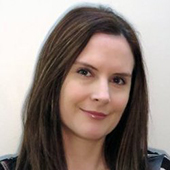The goal of a continuous customer feedback program is to engage real users in conversations about your product. As a UX researcher, you can conduct a customer feedback program to accomplish the following objectives:
- Identify and verify customers’ goals, behaviors, and attitudes.
- Explore and validate upcoming designs and other user-centric deliverables such as personas and scenarios.
- Discuss the pain points of existing product designs.
You can use the findings from these conversations to support the design recommendations that you provide to your product development team.
Why Create a Continuous Customer Feedback Program?
Basing your designs on users’ real needs is critical to your product’s success in the marketplace. Equally important is ensuring that your product is easy to use before it’s developed—let alone released. The fact is that, if people don’t want to use your product or can’t use it, they won’t use it.
By collaborating with people who really use your products, you can explore and validate your product’s design and ensure the best user experience possible. However, having a real user as part of your sprint team is often an unrealistic luxury. One-on-one sessions are great, but are often time consuming to plan and execute. Sporadic or ad-hoc sessions can be great—if you’re disciplined enough to fit them into your plan often enough. But it’s easy to get stuck in design mode and forget to pause and collect feedback from real users or just skip getting users’ feedback altogether.
Setting Up Your Customer Feedback Program
When you ask something of your customers, you must provide something to them in return. Holding recurring customer feedback sessions with users ensures that you keep them close and convinces them that they’re being heard. Careful preparation is necessary to encourage attendance and foster open communication with users. Here are the tools, tips, and techniques we’ve found to be effective in setting up our customer feedback program.
Legalities
Before you begin, consult your legal team to understand how you can communicate with your customers and what documents need to be in place for customers to participate in your program. For example, customers may need to sign a nondisclosure agreement so you can discuss new designs or product futures that are not yet public knowledge.
Your legal team might also have a say in how you can recruit participants. For example, are you allowed to broadcast your program on Facebook?
Ask your legal team to compose any disclaimers that you need to provide or state at the start of each session with users. Often these disclaimers emphasize the importance of not basing any purchasing decisions on session materials or discussions.
What Users Should Participate?
It’s important to identify the right people to join your customer feedback program. First, you want people who closely reflect your product’s personas. In some cases, your contacts will be the people who manage such users, so encourage them to identify real users who have time to participate in your discussions. If you’re unable to get that commitment, accept the participation of managers, but recognize that they’re speaking on behalf of real users.
Not only should you consider participants’ personas, you should be sure to give participants a positive experience. It’s important to set expectations about what participants will give to and receive from the program. Make it clear that they should not use the sessions to vent about your current product and that you’ll guide discussions through a set agenda. In addition to conveying this information to participants, make sure your extended team understands that the explicit purpose of the program is not to calm irritated customers or collect information about requirements and defects.
Effective focus groups include no more than ten participants at a time. However, participants are often unable to attend every session, so aim to recruit about fifteen people. If the number creeps higher, consider breaking your program into smaller groups. You could divide participants into groups based on user type or the types of activities they perform using the product. Or you could open each group’s session by repeating the same content, then let the participants in a particular group choose the focus of their session.

